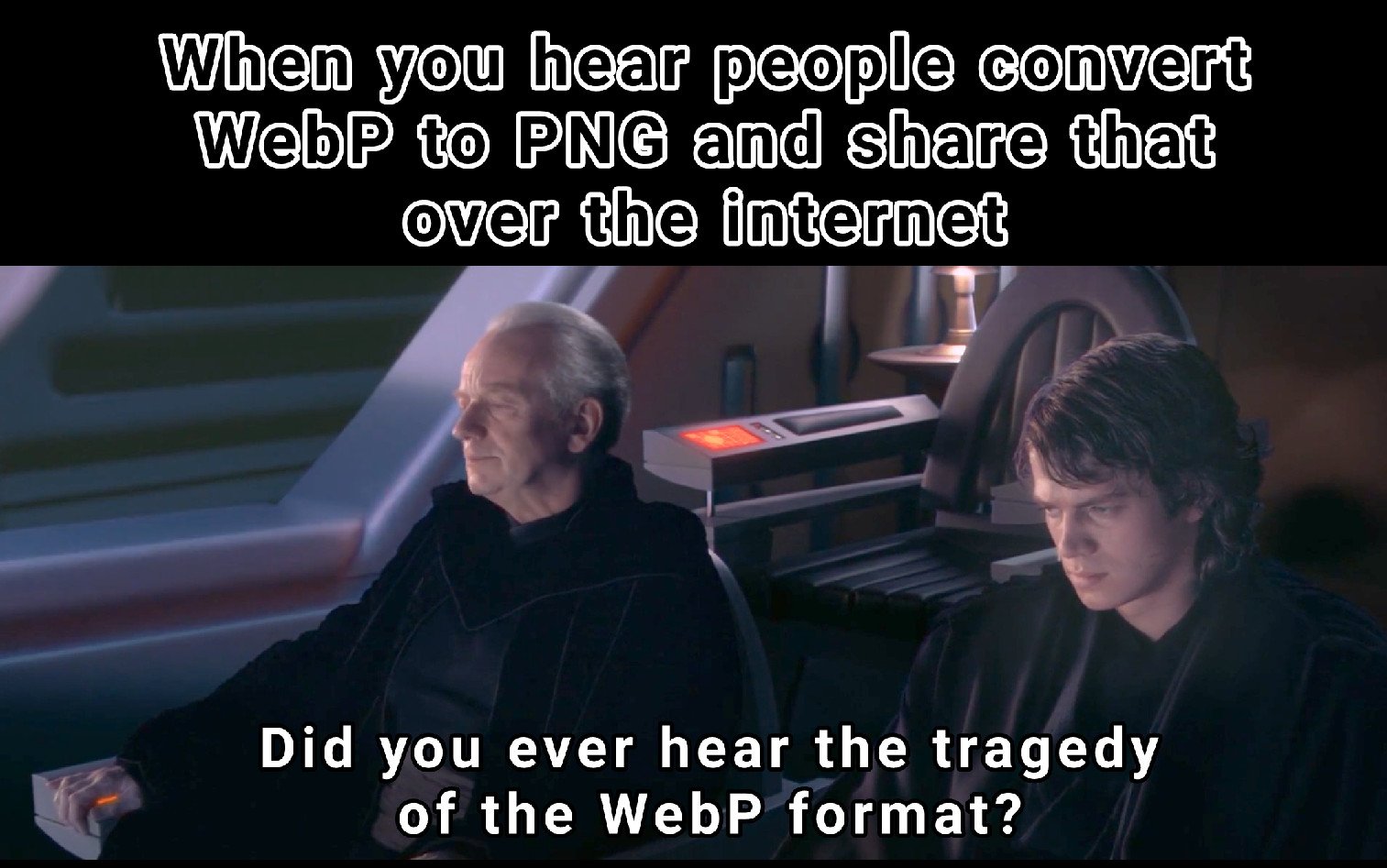this post was submitted on 26 Jul 2023
256 points (93.8% liked)
Memes
45575 readers
1406 users here now
Rules:
- Be civil and nice.
- Try not to excessively repost, as a rule of thumb, wait at least 2 months to do it if you have to.
founded 5 years ago
MODERATORS
you are viewing a single comment's thread
view the rest of the comments
view the rest of the comments

If you look into it a bit more, the resistance around WebP is mainly because it has some crippling weaknesses. I did some visual quality testing ( here, here & here ) & I (as well as many others independently) have found that for photographic images, WebP & JPEG are equals, & Google's messaging that lossy WebP meaningfully improves upon JPEG for general visual quality per bit is misleading. That being said, WebP has some important strengths that are not often acknowledged. In addition to transparency & (really good) animation support, it also has:
WebP's main weaknesses are:
JPEG-XL in particular is very promising. It faces hostility from Google but has an incredible breadth of features & strong compression performance, as well as Apple ecosystem-wide adoption on the way with the upcoming versions of macOS, iOS, ipadOS, etc. It is also royalty free. AVIF is better than WebP at everything except lossless, too.
Feeling any which way about WebP, it is still a shame to see it transcoded to PNG. All that wasted potential ...